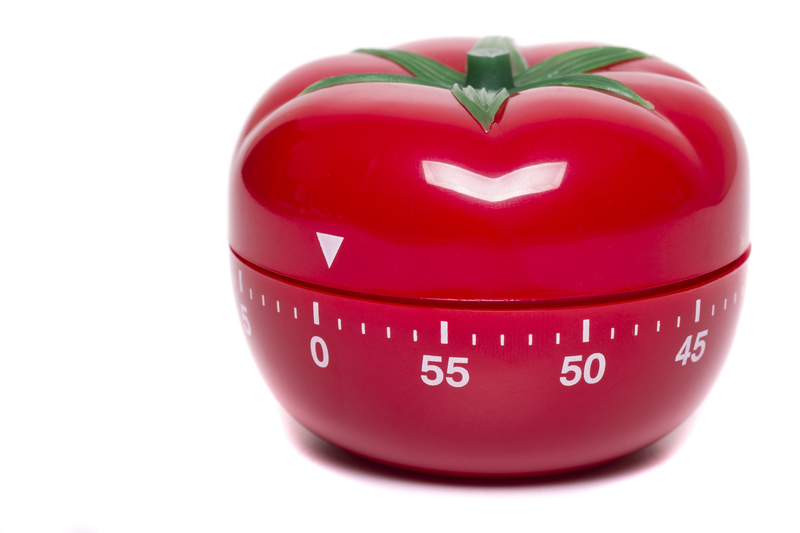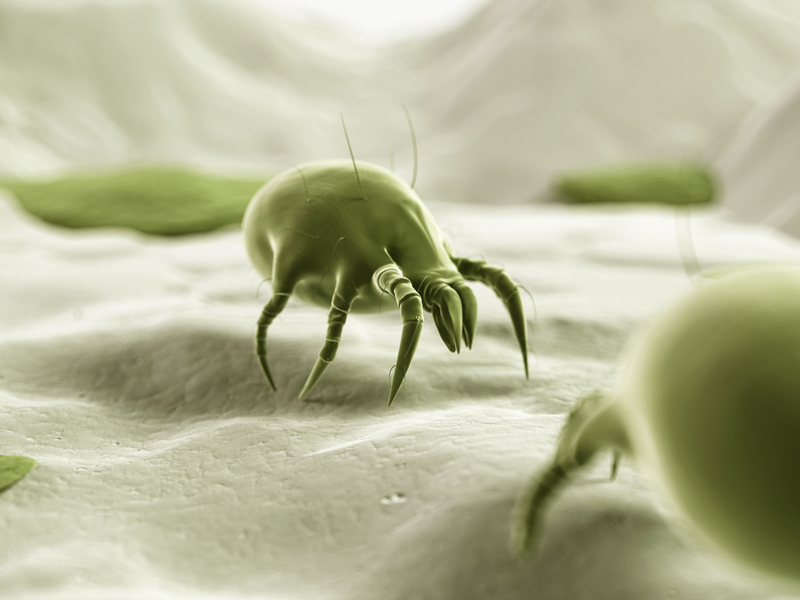Step-by-Step Guide to Removing Damp Smells
Posted on 30/06/2025
Step-by-Step Guide to Removing Damp Smells
Damp smells can invade your home, creating an unpleasant environment and sometimes signaling underlying issues with moisture or mold. Whether you're dealing with a musty basement or residual odors after a rainstorm, removing damp smells is crucial for your comfort and for maintaining a healthy living space. This comprehensive guide will walk you through the process, offer practical tips, and explain how to prevent future recurrence of musty odors.

What Causes Damp Smells?
Understanding the source of damp odors is the first step to tackling the problem. Damp smells, sometimes referred to as musty odors or mildew scents, typically result from the presence of excess moisture combined with poor ventilation. This creates an environment where mold and mildew can grow, thus releasing the telltale musty aroma.
- Leaking pipes or plumbing
- Poorly ventilated rooms (bathrooms, basements, attics)
- Flooding or water ingress
- Wet clothing, upholstery, or carpets left to dry indoors
- Condensation build-up on walls and ceilings
The Dangers Behind Damp Odors
While the smell alone is annoying, chronic dampness can lead to:
- Mold growth, which can damage property
- Respiratory health risks and allergies
- Attracting pests such as dust mites
- Peeling paint or wallpaper
Eliminating damp smells quickly is essential for both health and property value. The following sections provide an actionable step-by-step guide you can follow today.
Step 1: Identify the Source of the Damp Smell
Before you can eliminate a musty odor, you must find where the moisture comes from. Take your time to inspect problem areas, including:
- Behind furniture and cabinets
- Under sinks and around plumbing fixtures
- Basement walls and floors
- Carpets and rugs
- Ceilings and attic spaces
Check for visible signs of mold, damp spots, water staining, or condensation. If you discover leaks or cracks, make note of them for repair.
Step 2: Remove Excess Moisture
Dealing with excess humidity is crucial in removing musty odors permanently. Here's what you should do:
- Air out rooms: Open windows and doors to allow fresh air to circulate and carry away the stale smell.
- Use a dehumidifier: This device will pull moisture from the air, speeding up the drying process.
- Increase ventilation: Use fans, especially in bathrooms and kitchens, to move moist air outside.
- Absorb moisture naturally: Place bowls of baking soda, activated charcoal, or silica gel in affected spaces, as they naturally absorb dampness.
Step 3: Clean and Disinfect Problem Areas
Tackling Hard Surfaces
Musty odors often linger on hard surfaces such as floors, baseboards, tiles, and walls. Use a solution of one part vinegar to two parts water and use a cloth to wipe down affected areas. This not only neutralizes smells but also kills bacteria and mold spores.
Cleaning Soft Furnishings and Upholstery
- Wash fabrics: Launder curtains, pillow covers, and blankets using a little vinegar in the wash cycle for odor removal.
- Deep clean carpets: Use a carpet cleaner with an anti-mold solution or sprinkle baking soda liberally, let it sit, and then vacuum thoroughly.
- Upholstery care: For sofas and chairs, sprinkle baking soda, let it absorb the smell, then vacuum or steam clean.
Remove and Replace Severely Affected Materials
If you notice extensive mold growth or unmanageable dampness in drywall, carpet, or insulation, consult a professional. In severe cases, these materials may need to be replaced entirely to eliminate the odor for good.
Step 4: Treat Mold and Mildew
If you spot moldy patches, it's crucial to address them as part of musty smell removal:
- Small Areas: Scrub with a solution of vinegar, water, and a small amount of dish soap. Wear gloves and a mask.
- Larger Problems: For infestations covering more than ten square feet, call in a mold remediation specialist.
Never mix bleach with ammonia or other cleaning agents, as this creates toxic fumes. Once cleaned, allow the area to dry thoroughly and consider sealing surfaces with a mold-resistant product.
Step 5: Neutralize Lingering Odors
Even after cleaning and drying, musty odors can linger. Here's how to finally get rid of damp smells:
- Baking soda: Leave bowls or sprinkle powder in affected areas overnight, then vacuum or remove.
- Charcoal: Activated charcoal is a powerful odor absorber; place sachets in closets, drawers, and corners.
- White vinegar: Fill cups and leave them in the room for a day to absorb airborne smells.
- Essential oils: Use natural scents like tea tree or eucalyptus, known for their anti-microbial properties; add a few drops to cleaning water or diffuse in the room.
Repeat these treatments as necessary until the damp smell has completely disappeared.
Step 6: Prevent Future Damp and Musty Smells
Once you have successfully eliminated musty odors, focus on long-term prevention:
- Regular maintenance: Check for leaks, blocked gutters, and signs of condensation.
- Improve drainage: Ensure the ground slopes away from your home's foundation and clear external drains.
- Ventilation: Keep bathrooms and kitchens ventilated with fans or open windows while in use.
- Heat your home regularly: Keeping rooms at a consistent temperature reduces moisture build-up.
- Use moisture absorbers: Place silica gel or damp traps in problem areas like wardrobes or under sinks.
- Store items correctly: Make sure clothes, linens, and paper are dry before storing to stop musty smells.
Extra Tips for Keeping Damp Smells at Bay
- Avoid drying clothes indoors when possible, or use a vented dryer.
- Leave wardrobe doors ajar occasionally to air out clothes and prevent stale odors.
- Clean air conditioning and HVAC filters regularly to stop mold growth in the system.
Natural Remedies for Removing Damp and Musty Odors
Sometimes, natural solutions work best for getting rid of damp smells. Here are a few eco-friendly hacks you can try:
- Lemon juice: Besides leaving a fresh scent, lemon juice can help cut through mildew and neutralize odors.
- Salt: Filling bowls with salt helps soak up excess humidity from the air and reduces dampness in small spaces.
- Houseplants: Certain plants like English ivy and peace lilies naturally improve air quality and reduce humidity indoors.
Combine these remedies with regular cleaning and good ventilation for an effective, ongoing solution to musty home odors.
When To Call a Professional
If, after following this step-by-step guide to removing damp smells, the odor persists, your home may have a more serious hidden issue. Consider consulting a professional for:
- Large mold infestations or visible black mold
- Persistent leaks or water ingress you cannot trace
- Breathing problems or allergic reactions in residents
Experts can use tools like moisture meters and thermal cameras to pinpoint the problem and recommend permanent fixes, such as improved damp-proofing or advanced mold remediation techniques.

Frequently Asked Questions on Damp Smell Removal
How long does it take to remove a musty smell?
The duration varies depending on the severity of the issue and how quickly you can address the source of moisture. For mild cases, you may notice a difference within a day or two by airing out the space and using odor absorbers. Severe problems involving structural damp, however, can take weeks and may require professional intervention.
What products are best for removing musty odors?
Baking soda, activated charcoal, white vinegar, and antimicrobial sprays are among the most effective. For ongoing maintenance, using dehumidifiers and silica gel packets in wardrobes, cupboards, and basements can help prevent odors from returning.
Do air fresheners work to eliminate damp smells?
Ordinary air fresheners only mask the odor temporarily. They don't remove the cause of musty scents. For lasting freshness, address the underlying moisture problem and clean contaminated surfaces.
Conclusion: Freshen Up Your Space for Good
Removing damp smells from your home requires a systematic and thorough approach. Begin by identifying the source of the moisture, dry and clean affected areas, eliminate lingering odors naturally or with commercial products, and take steps to prevent further damp issues. With consistent care and vigilance, you can keep your living environment fresh, healthy, and free from unpleasant musty scents for years to come.
By following this comprehensive step-by-step guide to removing damp smells, you'll not only improve your home's atmosphere but also protect its value and your family's well-being. Start today and enjoy a more inviting, odor-free home!




